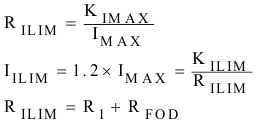SLUSFU9 October 2024 BQ51013C
PRODUCTION DATA
- 1
- 1 Features
- 2 Applications
- 3 Description
- 4 Description (continued)
- 5 Device Comparison Table
- 6 Pin Configuration and Functions
- 7 Specifications
-
8 Detailed Description
- 8.1 Overview
- 8.2 Functional Block Diagram
- 8.3
Feature Description
- 8.3.1 Details of a Qi Wireless Power System and BQ51013C Power Transfer Flow Diagrams
- 8.3.2 Dynamic Rectifier Control
- 8.3.3 Dynamic Efficiency Scaling
- 8.3.4 RILIM Calculations
- 8.3.5 Input Overvoltage
- 8.3.6 Adapter Enable Functionality and EN1/EN2 Control
- 8.3.7 End Power Transfer Packet (WPC Header 0x02)
- 8.3.8 Status Outputs
- 8.3.9 WPC Communication Scheme
- 8.3.10 Communication Modulator
- 8.3.11 Adaptive Communication Limit
- 8.3.12 Synchronous Rectification
- 8.3.13 Temperature Sense Resistor Network (TS)
- 8.3.14 3-State Driver Recommendations for the TS/CTRL Pin
- 8.3.15 Thermal Protection
- 8.3.16 WPC v2.0 Compliance – Foreign Object Detection
- 8.3.17 Receiver Coil Load-Line Analysis
- 8.4 Device Functional Modes
-
9 Application and Implementation
- 9.1 Application Information
- 9.2
Typical Applications
- 9.2.1
BQ51013C Wireless Power Receiver Used as a Power Supply
- 9.2.1.1 Design Requirements
- 9.2.1.2
Detailed Design Procedure
- 9.2.1.2.1 Using The BQ51013C as a Wireless Power Supply: (See Figure 1-1 )
- 9.2.1.2.2 Series and Parallel Resonant Capacitor Selection
- 9.2.1.2.3 Recommended RX Coils
- 9.2.1.2.4 COMM, CLAMP, and BOOT Capacitors
- 9.2.1.2.5 Control Pins and CHG
- 9.2.1.2.6 Current Limit and FOD
- 9.2.1.2.7 RECT and OUT Capacitance
- 9.2.1.3 Application Curves
- 9.2.2 Dual Power Path: Wireless Power and DC Input
- 9.2.3 Wireless and Direct Charging of a Li-Ion Battery at 800 mA
- 9.2.1
BQ51013C Wireless Power Receiver Used as a Power Supply
- 10Power Supply Recommendations
- 11Layout
- 12Device and Documentation Support
- 13Revision History
- 14Mechanical, Packaging, and Orderable Information
8.3.4 RILIM Calculations
The BQ51013C includes a means of providing hardware overcurrent protection by means of an analog current regulation loop. The hardware current limit provides an extra level of safety by clamping the maximum allowable output current (current compliance). The RILIM resistor size also sets the thresholds for the dynamic rectifier levels and thus providing efficiency tuning per each application’s maximum system current. The calculation for the total RILIM resistance is as follows:

where
- IMAX is the expected maximum output current during normal operation.
- IILIM is the hardware over current limit.
When referring to the application diagram shown in Figure 9-1, RILIM is the sum of RFOD and R1 (the total resistance from the ILIM pin to GND).